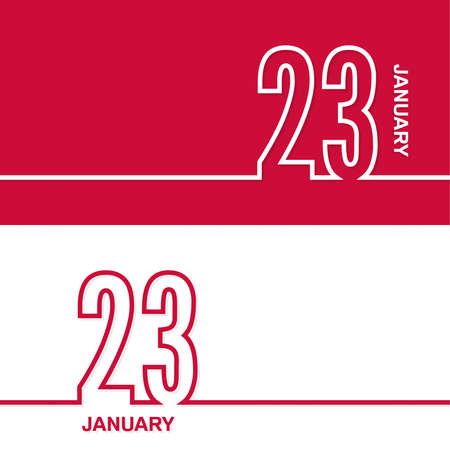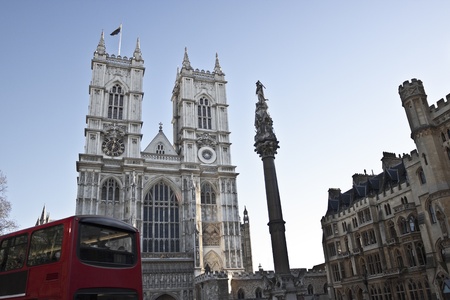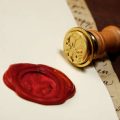1. Setting the Scene: Pre-Tarot Mysticism in Britain
Long before the tarot made its enigmatic entrance onto British soil, the United Kingdom was already steeped in a rich tradition of folklore, mysticism, and ancient methods of divination. The rolling mists of the British Isles have long been home to druids, cunning folk, and wise women who practised their own unique forms of fortune-telling. From the Celtic ogham staves—wooden sticks inscribed with symbols—to scrying with polished stones and water bowls, Britons sought answers from nature and the unseen world around them. The stories spun around stone circles like Stonehenge and Avebury carried whispers of arcane rituals and seasonal rites that shaped spiritual life for centuries. In rural villages, people turned to charms, runes, or even reading animal entrails for guidance. This landscape of superstition and magical thinking laid fertile ground for the acceptance of new esoteric systems. By the time tarot cards began to filter into British consciousness, there was already an established appetite for mystical exploration—a collective openness to weaving new symbols and systems into the fabric of native spiritual practice.
2. Continental Origins: How Tarot Crossed the Channel
Delving into the origins of tarot, we journey back to 15th-century Italy, where tarot cards first emerged not as mystical tools, but as elegant playing cards in the courts and coffee houses of Milan and Florence. Known as “carte da trionfi,” these decks were a symbol of status and artistry before their esoteric potential was ever considered. By the 18th century, French intellectual salons adopted tarot, layering it with occult symbolism and philosophical intrigue—transforming simple gaming cards into gateways of divination.
The story takes a fascinating turn when we consider how these continental traditions crossed the Channel. The movement of ideas between Europe’s cultural capitals and Britain was brisk, aided by traders, artists, and scholars. French émigrés fleeing revolution brought tarot’s mystique to British soil, while British travellers returned from Grand Tours with tales of exotic card games and mysterious readings. The following table illustrates key moments in tarot’s continental evolution before its British debut:
| Period | Location | Significance |
|---|---|---|
| 15th Century | Italy (Milan & Florence) | Birth of tarot as luxury playing cards |
| 18th Century | France (Paris Salons) | Transformation into an esoteric tool; rise of cartomancy |
| Late 18th–Early 19th Century | Channel Crossing to Britain | Introduction via émigrés and intellectual exchange |
This cross-cultural odyssey laid the foundation for tarot’s unique British identity. In Britain, tarot would not only adapt to local tastes but also serve as a mirror for shifting social attitudes—from Victorian fascination with the occult to the democratic spiritualism of today. Understanding this continental legacy is essential for appreciating how tarot readings at a London café or a Cornish village fete carry echoes of centuries-old journeys across Europe.

3. Victorian Revival: Tarot Meets the Occult
The Victorian era in Britain was a veritable cauldron of curiosity, invention, and, quite notably, spiritual experimentation. As the British Empire expanded and scientific advancements flourished, so too did a collective yearning for deeper meaning beyond the material world. This cultural climate proved to be the perfect breeding ground for tarot’s integration into British society—not merely as a parlour amusement, but as a serious tool for self-inquiry and mystical exploration.
During this period, tarot cards were swept up in the broader Victorian obsession with all things esoteric. The public’s appetite for séances, mesmerism, and arcane wisdom created fertile soil for tarot to take root. Far from its continental origins as a game or simple divinatory device, tarot in the UK became intimately entwined with distinctly British spiritual societies.
The Golden Dawn and the British Esoteric Renaissance
Perhaps no group exemplifies this blend more than The Hermetic Order of the Golden Dawn. Founded in London in 1887 by three Freemasons—William Wynn Westcott, Samuel Liddell MacGregor Mathers, and William Robert Woodman—the Golden Dawn was dedicated to studying magic, alchemy, astrology, and tarot. Their approach wasn’t just about fortune-telling; it was about using tarot as an initiatory map—a symbolic language that could unlock the secrets of personal transformation and cosmic order.
A Uniquely British Approach
This period saw tarot shed its purely continental trappings and don a peculiarly British cloak of symbolism. Members of these societies—many from respectable backgrounds—approached tarot with a scholarly seriousness. They reinterpreted traditional decks through a lens of Western mysticism and Christian allegory, layering in elements from Kabbalah and classical mythology. The Rider-Waite-Smith deck, later published in 1909 by two Golden Dawn initiates, would become the quintessential example of this synthesis.
Cultural Cross-Pollination
It’s impossible to overstate how thoroughly Victorian Britain blended imported occult traditions with homegrown intellectual fervour. Tarot became not only fashionable but intellectually respectable among certain circles—discussed in drawing rooms alongside poetry readings and philosophical debates. This cross-pollination between continental esoterica and British rationalism shaped a uniquely local expression of tarot that still resonates today.
In short, it was during this vibrant Victorian revival that tarot truly found its spiritual home on British soil—no longer just a foreign curiosity but an integral part of the UK’s own mystical landscape.
4. British Icons: The Creators Who Shaped Tarot
When it comes to the story of tarot in the UK, two names stand out above all others: Arthur Edward Waite and Pamela Colman Smith. Their collaboration not only revolutionised tarot imagery but also anchored tarot deeply within British cultural consciousness. Let’s explore how these pivotal figures shaped the cards we know and love today.
The Dynamic Duo: Waite and Smith
In the early 20th century, A.E. Waite, a mystic and scholar, sought to create a tarot deck accessible to both scholars and everyday seekers. Teaming up with the artistic visionary Pamela Colman Smith, they launched what would become the world’s most recognisable tarot deck—the Rider-Waite-Smith deck in 1909. This deck was groundbreaking for its fully illustrated minor arcana cards, which made interpretation more intuitive and visually engaging. Their partnership exemplifies a uniquely British blend of intellectualism and creativity.
British Influence on Tarot Imagery and Symbolism
The Rider-Waite-Smith deck did more than simply reinterpret old symbols; it infused tarot with British sensibilities—drawing from local folklore, Christian iconography, and the mystical traditions of the Golden Dawn (a famous London-based occult society). The language, attire, and even landscapes depicted in the cards subtly reflect early 20th-century Britain, making the deck feel at home on British soil.
Key Contributions by British Tarot Creators
| Name | Main Contribution | Influence on British Culture |
|---|---|---|
| A.E. Waite | Conceptual mastermind behind the Rider-Waite-Smith tarot; reinterpreted card meanings for modern audiences | Brought scholarly respectability to tarot study and practice in the UK |
| Pamela Colman Smith | Illustrator who created vivid, narrative-driven artwork for each card | Made tarot visually accessible, inspiring generations of British artists and readers |
The Ripple Effect: Legacy in Modern Britain
Their influence is still palpable across Britain today—from mainstream bookshops stocking tarot decks to local meet-ups in Brighton or Edinburgh where people gather to interpret cards together. The Rider-Waite-Smith deck has become a staple not just for fortune-telling but as a tool for creative inspiration and self-reflection—a very British approach to mystical exploration.
In Summary
By shining a spotlight on these iconic creators, we see how their vision laid the groundwork for tarot’s acceptance into everyday British life. Through their artistry and scholarship, Waite and Smith transformed tarot from an esoteric import into something distinctly British—part of the nation’s ongoing dialogue between tradition and innovation.
5. Modern-Day British Tarot: From Covens to the High Street
Today, tarot in the UK is a far cry from its secretive roots and Victorian parlour games. The cards have woven themselves into the fabric of contemporary British life, transitioning from niche occult circles to a mainstream cultural phenomenon. Whether you’re strolling down a bustling high street or browsing online, tarot decks are no longer just the preserve of witches’ covens and esoteric bookshops—they’re everywhere, from chain bookstores to trendy boutiques.
The Revival of Witchcraft and Tarot
Britain’s rich history with witchcraft has experienced a remarkable revival in recent decades, with tarot at its heart. Covens across the country—particularly in cities like Brighton, Glastonbury, and even parts of London—have embraced tarot as both a spiritual tool and a means of self-reflection. Modern witches use the cards for everything from group rituals to personal guidance, blending ancient traditions with contemporary sensibilities.
Bookshops, Boutiques, and Beyond
The ubiquity of tarot in British retail culture is hard to ignore. High street retailers such as Waterstones proudly display an array of tarot decks and guidebooks alongside their bestsellers. Independent bookshops curate collections that cater to everyone from absolute beginners to seasoned readers. You’ll even find pop-up tarot readers at markets and festivals across the UK, bringing a touch of mysticism to everyday commerce.
Tarot in British Media and Pop Culture
The cards have also made their mark on British media and popular culture. From cameo appearances in hit TV shows like “Doctor Who” and “Peaky Blinders” to features in glossy fashion magazines, tarot symbolism is part of the national conversation. Social media platforms are brimming with UK-based tarot influencers offering daily card pulls, workshops, and even live readings—making mystical wisdom accessible with just a swipe.
This modern embrace reflects something uniquely British: an ability to blend reverence for tradition with open-minded innovation. Tarot has moved beyond fortune-telling stereotypes, becoming a language for exploring identity, wellbeing, and creativity—a true testament to its enduring appeal on these shores.
6. Tarot, Identity, and the British Psyche
To truly grasp the story of tarot in the UK is to peer beneath the surface of cards and symbolism, venturing instead into the heart of British identity itself. For centuries, Britain has cultivated a reputation for stoic rationality on one hand and a quietly simmering fascination with the mystical on the other. The arrival—and subsequent embrace—of tarot is no accident; it mirrors an enduring national penchant for both scepticism and curiosity, for tradition and subversive reinvention.
The Allure of Mystery: A National Trait
The British psyche is famously fond of riddles and hidden meanings, from cryptic crosswords to Arthurian legends veiled in mist. Tarot’s enigmatic images have therefore found fertile ground here—not just as a tool for divination, but as a cultural artefact echoing Britain’s love affair with ambiguity. It’s not surprising that some of the world’s most influential tarot decks, like the Rider-Waite-Smith, were conceived by British minds steeped in the country’s own traditions of secret societies and esoteric clubs.
Intuition versus Rationality
There’s a certain delight in how tarot challenges the British inclination toward the empirical. In a land famed for its scientific revolutions and logical thinkers—from Newton to Darwin—tarot has carved out its niche as a counterbalance: an invitation to trust intuition, embrace uncertainty, and explore inner worlds beyond what can be quantified. This interplay between reason and reverie is now woven into the fabric of contemporary British spiritual life.
Tarot as Mirror: Reflecting Modern Identities
Today’s British tarot scene is remarkably diverse, reflecting the UK’s evolving social landscape. For many, tarot offers more than prediction; it serves as a mirror for self-exploration and cultural dialogue. Whether at a local fair in Yorkshire or within hipster enclaves in London, people use tarot to navigate questions of belonging, authenticity, and personal myth-making—issues deeply entwined with what it means to be British in an ever-changing world.
Ultimately, tarot in Britain isn’t just about foretelling futures or invoking arcane powers. It’s about engaging with the mysteries at the core of national character—where history meets intuition, where scepticism sits comfortably alongside wonder. In this way, tarot continues to illuminate not only hidden truths but also the very soul of Britain itself.


